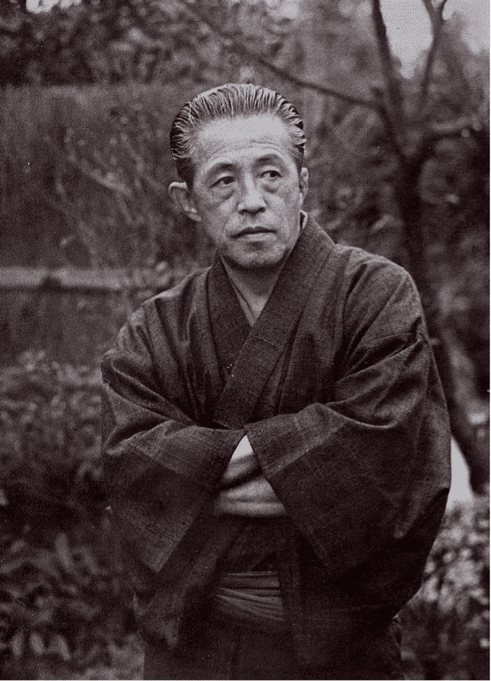Name Yasushi Inoue Role Writer | Spouse Fumi Inoue (m. 1935) | |
 | ||
Movies Chronicle of My Mother, The Warrior and the Wolf Children Shuichi Inoue, Takuya Inoue, Yoshiko Kuroda, Ikuyo Uraki Books The Hunting Gun, The Samurai Banner of, Lou‑lan and other stories, Le Loup bleu, Das Jagdgewehr Similar People Masato Harada, Koji Yakusho, Tian Zhuangzhuang, Kirin Kiki, Kei Kumai | ||
Yasushi inoue nuages garance
Yasushi Inoue (井上靖, Inoue Yasushi, May 6, 1907 – January 29, 1991) was a Japanese writer of poetry, essays, short fiction, and novels. Born in Asahikawa, Hokkaido in 1907, Inoue was raised in Shizuoka Prefecture.
Contents
- Yasushi inoue nuages garance
- YASUSHI INOUE 1907 1991 Un sicle dcrivains 1997
- Biography
- Prizes
- References
YASUSHI INOUE (1907-1991) – Un siècle d'écrivains [1997]
Biography
Inoue is famous for his serious historical fiction of ancient Japan and the Asian continent, including Wind and Waves, Tun-huang, and Confucius, but his work also included semi-autobiographical novels and short fiction of great humor, pathos, and wisdom like Shirobamba and Asunaro Monogatari, which depicted the setting of the author's own life — Japan of the early to mid twentieth century — in revealing perspective.
Inoue, who is one of Japan's most prolific writers today, started relatively late as a novelist. He was forty-two when he published in 1949 his first works, the two novelettes Ryoju and The Bullfight, which the following year won for him the top literary prize in Japan, the Akutagawa Prize. His longer The Roof Tile of Tempyo deals both with art and ancient China; Lou-Lan and The Flood are short historical novels of China. Whether he is writing full novels, novelettes, or short-stories, however, Inoue's penchant for detailed, exhaustive research and historical accuracy give his stories a flavor of authenticity. Even the characters in his stories can often be traced back to historical individuals. In the spring of 1964, Inoue went to the United States to start his research on what he personally believes will be his magnum opus, a multi-volume treatment of first, second, and third generation Japanese abroad, particularly in the United States.
—Leon Picon, from the introduction to The Counterfeiter, published in 1965
